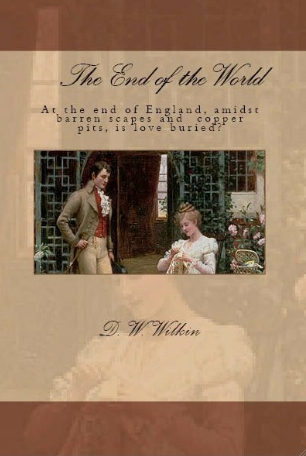D.W. Wilkin's Blog, page 157
January 26, 2015
Regency Personalities Series-Major-General John Gaspard Le Marchant
Regency Personalities Series
In my attempts to provide us with the details of the Regency, today I continue with one of the��many period notables.
Major-General John Gaspard Le Marchant
9 February 1766 ��� 22 July 1812
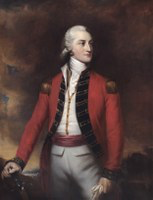
John Gaspard Le Marchant
Major-General John Gaspard Le Marchant was one of the finest British cavalry commanders of his generation; he was also an intellectual soldier who had a great influence on the efficient functioning of the army he served in. He was instrumental in the process which produced the first British military academy and staff college; and he saw active service in the French Revolutionary Wars and the Peninsular War.
Le Marchant was the son of an officer of dragoons, John Le Marchant, a member of an old Guernsey family; his mother, Marie, was the daughter of Count Hirzel de St. Gratien and a descendant of the celebrated French Protestant leader Admiral Gaspard de Coligny, from whom Le Marchant derived his middle name. Le Marchant was born at his maternal grandfather’s house in Amiens. After leaving Dr Morgan’s school in Bath characterised as ‘one of the two greatest dunces that had ever been there’ (the other being Sir Sidney Smith), Le Marchant reformed his character and was commissioned in a regiment of the Wiltshire Militia. He later, in 1783, transferred to the regular army and obtained an ensigncy in the 1st Regiment of Foot (The Royal Regiment or Royal Scots). A few years of duty in Ireland and Gibraltar followed and he then made his move into the cavalry, being commissioned into the 6th Dragoons (Iniskillings). In the autumn of 1789 Le Marchant was promoted to lieutenant in the 2nd Dragoon Guards (Queen’s Bays), and in 1791 he was promoted to captain and command of a troop.
Le Marchant served as a brigade major during the disastrous Low Countries campaign of 1793-95, and for a time had command of his regiment as the most senior officer present. His practical experience in the field brought to Le Marchant’s attention the many deficiencies of equipment and training the British cavalry suffered from. He was impressed by the Austrian cavalry who were operating alongside the British, and was particularly struck by the disparaging remark of an Austrian officer who thought that the British swordsmanship was “most entertaining” but reminded him of “someone chopping wood”.
On his return to Britain he exerted himself to improve the equipment and combat training of the British cavalry. In 1795-6 he designed, in collaboration with the Birmingham sword cutler Henry Osborn, a new cavalry sabre, which was adopted for the light cavalry. In 1796 his treatise of instruction in mounted swordsmanship was adopted by the army as part of its official regulations (The Rules and Regulations of the Sword Exercise of the Cavalry). The sword exercise became quite celebrated, the elderly king, George III, became familiar with it, and country lanes abounded with small boys practising the cuts with sticks. Le Marchant toured Britain teaching cadres, drawn from both regular and yeomanry cavalry units, his system of swordsmanship; his methods were practical and painstaking and he was himself a superb mounted swordsman. Le Marchant was also to have gone to Ireland to teach his sword exercise there but was prevented from doing so, his brother-in-law, Lt. Peter Carey (16th Light Dragoons), undertook this duty in his stead. Le Marchant attained the rank of lieutenant-colonel in 1797. His promotion was at the direct behest of the king (Le Marchant lacked the family influence and wealth which was normally necessary for advances in rank), with whom Le Marchant had developed a friendly relationship.
After his promotion he served as second-in-command of the 7th Light Dragoons which Henry, Lord Paget commanded. Paget, as the Earl of Uxbridge, was later to command the Anglo-allied cavalry at the Battle of Waterloo. Though a good relationship existed between himself and Paget, Le Marchant found it difficult to keep company with the immensely wealthy and fashionable peer. He therefore transferred to his old regiment the 2nd Dragoon Guards (Queen’s Bays), becoming the regimental commander.
With the exception of the specialist instruction school for artillery officers at Woolwich no institution for the education of military officers existed in Britain. In 1801, after overcoming considerable opposition on the grounds of cost, Le Marchant’s scheme for establishing at High Wycombe and Great Marlow schools for the military instruction of officers was sanctioned by Parliament, and a grant of ��30,000 was voted for the foundation of a Royal Military College, the two original departments being afterwards combined and removed to a purpose-built Royal Military College at Sandhurst. The military schools had two functions; first was in the instruction of serving officers in the functions of the efficient staff-officer, and second was the schooling of youngsters before they gained an officer’s commission. Le Marchant was the first lieutenant-governor of the college, and during the nine years that he held this appointment he trained many officers who served with distinction under Wellington in the Peninsula War. It is notable that a number of senior serving officers, such as General Robert Ballard Long, attended courses at the college in order to improve their military knowledge. This college was one of the forerunners of the current Royal Military Academy Sandhurst, created in 1947. In 1804 Le Marchant received the personal thanks of King George III, who said “The country is greatly indebted to you”.
Having been promoted to major-general Le Marchant was given the command of a brigade of heavy cavalry in 1811, and greatly distinguished himself in several actions. In the cavalry clash at Villagarcia, 11 April 1812, Le Marchant led the 5th Dragoon Guards in a perfectly timed flank charge, in echelon of squadrons, which defeated two strong columns of French cavalry under General Charles Lallemand. The French had been attacking British light cavalry under Sir Stapleton Cotton, who were being forced to give ground.
He gained his greatest success as a cavalry commander at the Battle of Salamanca on 22 July 1812, where he was killed. During the development of the Anglo-Portuguese attack on the over-extended French left wing Wellington is reported as saying to Le Marchant that he must take the first favourable opportunity to engage the enemy’s infantry, “You must then charge at all hazards” was his final instruction. Following up the attack of the 5th Infantry Division Le Marchant led the 3rd and 4th Dragoons and the 5th Dragoon Guards in what was probably the most destructive charge made by a single brigade of cavalry in the whole Napoleonic period. The left wing of the French army were on the point of being defeated by the 3rd and 5th divisions of Anglo-Portuguese infantry when Le Marchant’s dragoons charged in and destroyed battalion after battalion. Many of the French infantrymen sought the protection of the British infantry to escape the sabres of the dragoons. Le Marchant, knowing he had achieved a magnificent success, was leading a squadron against the last of the formed French infantry when he was shot and his spine broken.
Wellington’s despatch after the battle stated: “the cavalry under Lieutenant-General Sir Stapleton Cotton, made a most gallant and successful charge against a body of the enemy’s infantry, which they overthrew and cut to pieces. In this charge Major-General Le Marchant was killed at the head of his brigade, and I have to lament the loss of a most able officer”.
Le Marchant was responsible for a considerable improvement in the practical abilities of the British army on campaign. His sword exercise undoubtedly augmented the combat capabilities of the British cavalry. The military college produced many able staff officers, collectively known as “Wycombites,” who went on to serve in important staff positions in the Peninsular War and the Waterloo Campaign. He also introduced the idea that officers should be formally trained in their duties rather than having to pick up the rudiments of their profession on active service.
Le Marchant was liked and admired by many in his profession, soldier and officer alike. The Duke of York, the commander-in-chief of the British Army, is said to have wept when he was told of Le Marchant’s death.
He wrote several treatises on cavalry tactics and other military subjects, most published semi-anonymously (the ones adopted as army regulations were not officially ascribed to a single author). These included Rules and Regulations of the Sword Exercise and The Duties of Officers on the Outpost. His treatise An Outline of the General Staff of the Army was presented to the Duke of York in 1802. Its recommendations were not taken up in their entirety, but several of his suggestions were, such as the setting up of a “Staff Corps”; such a corps played an invaluable role in the functioning of the British Army during the Peninsular War.
John Le Marchant was buried on the field of battle, however, a monument to him was erected in St Paul’s Cathedral, London.
Fort Le Marchant on Guernsey is named for him.
He married, on 29 October 1789, Mary daughter of John Carey of Guernsey. All accounts suggest that Le Marchant was a devoted husband and father. Mary Le Marchant pre-deceased her husband, dying in childbirth in 1811. Le Marchant had four sons and six daughters. Two of his sons, Sir Denis Le Marchant, 1st Baronet and John Le Marchant, gained public distinction. His eldest son, Carey, who was prominent at the storming of San Sebasti��n, died of a wound at Saint-Jean-de-Luz during the latter part of the Peninsular War. The children were left orphans at the death of their father and a yearly public pension of ��1200 was awarded to them. The younger children were placed in the care of an aunt.

Conclusion of the Trolling Series-We’ll All Go A Trolling
We���ll All Go A Trolling Not only do I write Regency and Romance, but I also have delved into Fantasy.
The Trolling series is the story of a man, Humphrey. We meet him as he has left youth and become a man with a man���s responsibilities.
We follow him in a series of stories that encompass the stages of life. We see him when he starts his family, when he has older sons and the father son dynamic is tested.
We see him when his children begin to marry and have children, and at the end of his life when those he has loved, and those who were his friends proceed him over the threshold into death.
All this while he serves a kingdom troubled by monsters. Troubles that he and his friends will learn to deal with and rectify. It is now available in a variety of formats.
For $2.99 you can get this fantasy adventure.
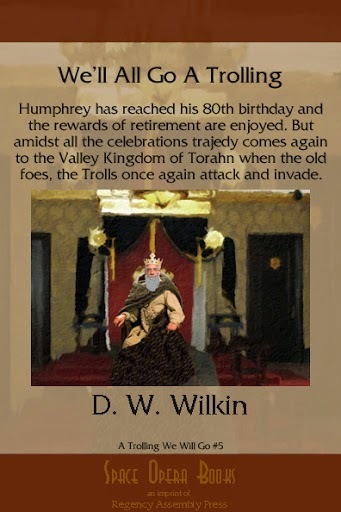
Barnes and Noble for your Nook
King Humphrey, retired, has his 80th birthday approaching. An event that he is not looking forward to.
A milestone, of course, but he has found traveling to Torc, the capital of the Valley Kingdom of Torahn, a trial. He enjoys his life in the country, far enough from the center of power where his son Daniel now is King and rules.
Peaceful days sitting on the porch. Reading, writing, passing the time with his guardsmen, his wife, and the visits of his grandson who has moved into a manor very near.
Why go to Torc where he was to be honored, but would certainly have a fight with his son, the current king. The two were just never going to see eye to eye, and Humphrey, at the age of 80, was no longer so concerned with all that happened to others.
He was waiting for his audience with the Gods where all his friends had preceded him. It would be his time soon enough.
Yet, the kingdom wanted him to attend the celebrations, and there were to be many. So many feasts and fireworks he could not keep track, but the most important came at the end, when word was brought that the Trolls were attacking once more.
Now Humphrey would sit as regent for his son, who went off to fight the ancient enemy. Humphrey had ruled the kingdom before, so it should not have been overwhelming, but at eighty, even the little things could prove troublesome.
Feedback
If you have any commentary, thoughts, ideas about the book (especially if you buy it, read it and like it ;-) then we would love to hear from you.

January 25, 2015
Regency Personalities Series-Louisa Lawrence
Regency Personalities Series
In my attempts to provide us with the details of the Regency, today I continue with one of the��many period notables.
Louisa Lawrence
1803���1855
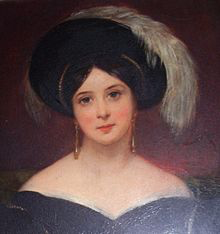
Louisa Lawrence
Louisa Lawrence was the daughter of James Senior and Elizabeth Trevor, of Broughton House, on the outskirts of Aylesbury. James had made his money as a haberdasher in Bruton Street, Berkeley Square, London. Like her father, Louisa had social ambitions. After she married the surgeon William Lawrence in 1828 when she was 25 and he was 45, hers were gratified by horticulture, first in a villa with less than two acres at Drayton Green. In her comparatively small garden she cultivated over 200 orchids and over 500 varieties of roses, long before hybrid tea roses and perpetuals were fashionable. There were Italian pollarded walks, rockwork including a rustic arch (with Cupid), a French parterre, a span-roofed greenhouse, a stove and an orchid house. By 1838 a detailed account of this model of what a suburban garden could be made into was published in The Gardener���s Magazine.
In June 1838 the Lawrences bought the larger property of nearby Ealing Park (or Little Ealing) with 100 acres, for ��9000. It is described by Pevsner as ���Low and long; nine bays with pediment over the centre and an Ionic one-storeyed colonnade all along���. This was very grandly furnished, as can be seen from the catalogue of the sale of the contents after Louisa���s death. There was a great deal of livestock on the estate, including poultry of all sorts, cows, sheep and pigs. There were thousands of bedding plants, ���stove plants���, more than 600 plants in early forcing houses, nearly a hundred camellias, and so on and so on.
An indication of Louisa���s celebrity is that two influential gardening books were dedicated to her in the early 1840s. In 1841 Mrs Loudon, wife of the editor of The Gardener’s Magazine, wrote The Ladies��� Companion to the Flower Garden, being an Alphabetical Arrangement of all the ornamental plants usually grown in gardens and shrubberies, with full directions for their culture. She dedicated it to Mrs Lawrence of Ealing Park, Middlesex, ���as a zealous patron of floriculture, an excellent botanist, and, above all, as one of the first lady-gardeners of the present day���. Vol. LXVIII of Curtis���s Botanical Magazine, the work of Sir William Jackson Hooker, the director of the Royal Botanic Garden was dedicated ���with sentiments of great regard and esteem��� to Mrs Lawrence, ���the beauty of whose gardens and pleasure grounds and whose most successfully cultivated vegetable treasures are only equalled by the liberality with which they are shown to all who are in botany and horticulture���.
Louisa was extremely competitive, constantly winning prizes for herself and also for her gardens at shows organised by the Botanic Society, the Royal Horticultural Society, and others. One of her keenest rivals was Joseph Paxton, the Duke of Devonshire���s famous gardener at Chatsworth in Derbyshire. He and the Duke visited her in 1841, although it seems that Paxton did not like her. Louisa���s greatest triumph was in 1849, and very much over the Duke and Paxton. For eighty years or so botanists had been bringing back to Europe previously unknown plants from all over the world, and they were eagerly cultivated. There was a race among English horticulturists to produce the first flower of a beautiful tree from Burma called Amherstia nobilis. Mrs Lawrence succeeded, sending the first spike to the Queen and the second to be engraved. A further spike arrived at Chatsworth and sent both the Duke and Paxton into raptures at its beauty. She was also the first to grow the purple-blue climbing nasturtium, Tropaeolum azureum.
At Ealing Park Louisa���s ambitions became even more serious, and she was even more definitely on the fashionable visiting circuit. In 1844 Dr. Carus, the King of Saxony���s doctor, writing in his diary about Louisa���s husband, noted: ���His wife is celebrated as one of the first flower cultivators in London, and possesses in particular a beautiful collection of orchideous plants, which we shall probably visit on some other occasion.��� The king���s party did go a few days later and Carus was amazed by both the flowers and the elegant grounds. Grander still was the visit of Queen Victoria, the Prince Consort, the King of the Belgians, and the Grand Duke of Mecklenburg-Strelitz, who planted the first trees in a planned avenue of deodars, the Himalayan cedar which had been introduced to England not long before, in 1831.
Louisa and William had two sons and two daughters. The eldest son died young; the second, Sir Trevor Lawrence, became as celebrated a gardener as his mother and President of the Royal Horticultural Society. On her death the surgeon, who had been chiefly living in Whitehall Place, leased Ealing Park and it was eventually sold by their son.

January 24, 2015
Regency Personalities Series-Sir Richard Hughes 2nd Baronet
Regency Personalities Series
In my attempts to provide us with the details of the Regency, today I continue with one of the��many period notables.
Sir Richard Hughes 2nd Baronet
1729 ��� 5 January 1812
Sir Richard Hughes 2nd Baronet Hughes entered the Portsmouth Naval Academy in 1739. He served on a number of ships in various locations during his naval career, including HMS��Boreas from 1763 to 1766. It is known that Hughes was in Canada in 1778, as he was appointed resident commissioner of the Halifax dockyard. This appointment was short, as by August of the same year he became lieutenant governor of Nova Scotia, succeeding Mariot Arbuthnot in that position. During his tenure, the main concern was the protection of the Province. In 1779, he succeeded his father as Baronet. He was followed in the position of lieutenant governor by Sir Andrew Hamond in 1781.
In 1782 Hughes was second-in-command under Lord Howe at the Relief of Gibraltar. Then in 1789 he became Commander-in-Chief, North American Station.
[image error]

January 23, 2015
Regency Personalities Series-Francis Egerton 3rd Duke of Bridgewater
Regency Personalities Series
In my attempts to provide us with the details of the Regency, today I continue with one of the��many period notables.
Francis Egerton 3rd Duke of Bridgewater
21 May 1736 ��� 8 March 1803
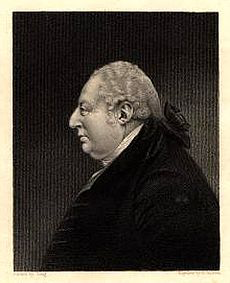
Francis Egerton
Francis Egerton 3rd Duke of Bridgewater succeeded to the Dukedom at the age of twelve on the death of his brother, the 2nd Duke. As a child he was sickly and of such unpromising intellectual capacity that at one time the idea of cutting the entail was seriously entertained. Shortly after attaining his majority he became engaged to the society beauty the Dowager Duchess of Hamilton, but her refusal to give up the acquaintance of her sister, Lady Coventry, led to the breaking off of the match. Thereupon the Duke broke up his London establishment, and retiring to his estate at Worsley, devoted himself to the making of canals.
The navigable canal from Worsley to Manchester which he projected for the transport of the coal obtained on his estates is usually cited as the first modern British canal (as opposed to a river navigation)���though the Sankey Canal is a rival to this claim (projected as a “navigation”, but built as a true canal). The construction of Bridgewater’s canal, with its famous aqueduct across the Irwell, was carried out by James Brindley, the celebrated engineer.
The completion of this first canal led the Duke to undertake a still more ambitious work. In 1762 he obtained parliamentary powers to provide an improved waterway between Liverpool and Manchester by means of a canal. The difficulties encountered in the execution of this canal were still more formidable than those of the Worsley canal, involving, as they did, the carrying of the canal over Sale Moor Moss. But the genius of Brindley, his engineer, proved superior to all obstacles, and though at one period of the undertaking the financial resources of the Duke were almost exhausted, the work was carried to a triumphant conclusion.
Both these canals were completed when Bridgewater was only thirty-six years of age, and the remainder of his life was spent in extending them and in improving his estates; and during the latter years of his life he derived a princely income from the success of his enterprise. Though a steady supporter of Pitt’s administration, he never took any prominent part in politics.
He accumulated great wealth through his canal and coal interests, and his annual income was said to have exceeded ��80,000. The family owned three estates at the time: Belton House, a small Sussex estate, and the old house and 6,000 acres (24��km��) at his house of Ashridge.
With the Bridgewater fortune now exceeding ��2,000,000, and the Duke being the richest noble in England, he set about rebuilding Ashridge. He began to pull the old buildings down, but he died before his plans could be completed, leaving his heir with nothing but a pile of rubble. He was the leading member of the syndicate which purchased and partly resold the famous Orleans Collection of old master paintings in 1798 (including Diana and Actaeon and Diana and Callisto), and most of his purchases are still held by the Egerton family.
The Duke died unmarried on 8 March 1803, and the Ducal title became extinct (although the Earldom of Bridgewater passed to a cousin, Lieutenant-General John Egerton, who became 7th Earl).
By his will he devised his canals and estates on trust, under which his nephew, the 2nd Marquess of Stafford (afterwards 1st Duke of Sutherland), became the first beneficiary, and next his son Lord Francis Leveson-Gower (afterwards 1st Earl of Ellesmere) and his issue. In order that the trust should last as long as possible, an extraordinary use was made of the legal rule that property may be settled for the duration of lives in being and twenty-one years after. The legatees were a great number of persons connected with the Duke and their living issue, plus all peers who had taken their seats in the House of Lords on or before the Duke’s decease. The last of the peers died in 1857, but one of the commoners survived till the 19th of October 1883, so the trust did not expire until 19 October 1903, when the whole property passed under the undivided control of Francis Egerton, 3rd Earl of Ellesmere. (The canals, however, had been transferred to the Bridgewater Navigation Company in 1872, by whom they were sold in 1887 to the Manchester Ship Canal Company.)

RAP has The End of the World
The End of the World This is the first of the Regency Romances I published. It is available for sale and I hope that you will take the opportunity to order your copy.
For yourself or as a gift. It is now available in a variety of formats. And now at the reduced price of $3.99 you can get this Regency Romance for your eReader. A little more as an actual physical book.
Barnes and Noble for your Nook
Amazon for your Kindle and as a Trade Paperback
Hermione Merwyn leads a pleasant, quiet life with her father, in the farthest corner of England. All is as it should be, though change is sure to come.�� For she and her sister have reached the age of marriage, but that can be no great adventure when life at home has already been so bountiful.
When Samuel Lynchhammer arrives in Cornwall, having journeyed the width of the country, he is down to his last few quid and needs to find work for his keep. Spurned by the most successful mine owner in the county, Gavin Tadcaster, Samuel finds work for Gavin���s adversary, Sir Lawrence Merwyn.
Can working for Sir Lawrence, the father of two young women on the cusp of their first season to far away London, be what Samuel needs to help him resolve the reasons for his running away from his obligations in the east of the country?
Will the daughters be able to find happiness in the desolate landscapes and deadly mines of their home? When a stranger arrives in Cornwall while the war rages on the Peninsula, is he the answer to one���s prayers, or a nightmare wearing the disguise of a gentleman?
Feedback
If you have any commentary, thoughts, ideas about the book (especially if you buy it, read it and like it ;-) then we would love to hear from you.

January 22, 2015
Regency Personalities Series-Joseph Whidbey
Regency Personalities Series
In my attempts to provide us with the details of the Regency, today I continue with one of the��many period notables.
Joseph Whidbey
1757 ��� 9 October 1833
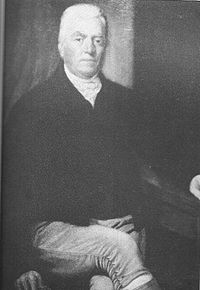
Joseph Whidbey
Joseph Whidbey was a member of the Royal Navy who served on the Vancouver Expedition 1791���95, and later achieved renown as a naval engineer. He is notable for having been the first European to discover and chart Admiralty Island in the Alexander Archipelago in 1794.
Little is recorded of Whidbey’s life before his warranting as a sailing master in 1779. After years of service during the war of American Independence, he received a peacetime appointment to HMS Europa, where with then-Lieutenant Vancouver, he conducted a detailed survey of Port Royal.
Europa paid off, but Whidbey soon gained a berth, along with Vancouver, in the newly built HMS Discovery. During the Nootka Crisis, both men were transferred to HMS Courageux, but returned to Discovery and departed for the Northwest Coast of America.
In 1792, Whidbey accompanied Lieutenant Peter Puget in small boats to explore what was later named Puget Sound. On June 2, the team discovered Deception Pass, establishing the insularity of the Sound’s largest island, which Vancouver named Whidbey Island.
Upon Discovery’s return to England, Whidbey served briefly in HMS Sans Pareil, but eventually turned to a shoreside career. In 1799, then-Earl St. Vincent commissioned him to make of feasibility survey making Tor Bay a fleet anchorage; Whidbey recommended this be done by building a great breakwater. Surviving correspondence suggests that around this time he apparently struck up a lifelong friendly and professional relationship with the engineer John Rennie.
Whidbey was appointed Master Attendant at Sheerness in 1799. His innovative salvage of the Dutch frigate Ambuscade was the subject of a paper read to the Royal Society in 1803. In 1804 he received the prestigious appointment as Master Attendant at Woolwich, one of the Royal Navy’s greatest dockyards. In 1805, Whidbey became a Fellow of the Royal Society, sponsored by a long list of distinguished men of science: Alexander Dalrymple, James Rennell, William Marsden, James Stanier Clarke, Sir Gilbert Blane, Mark Beaufoy, Joseph Huddart, and John Rennie.
In 1806, as the Napoleonic Wars impended, Whidbey joined Rennie in planning the Plymouth Breakwater, at St. Vincent’s request; in 1811 came the order to begin construction and Whidbey was appointed Acting Superintending Engineer. This task required great engineering, organizational and political skills, as the many strictly technical challenges were complicated by the significant resources devoted to the project, from which various parties evidenced a desire for advantage. Nearly 4,000,000 (four million) tons of stone were quarried and transported, using about a dozen ships innovatively designed by the two men.
Construction started on August 8, 1812; it was sufficiently completed by 1814 to shelter ships of the line, although work continued for over 50 years. Napoleon was reported as commenting that it was a grand thing, as he passed by it on the way to exile on St. Helena in 1815.
His contribution to the Royal Society includes a paper on fossils found in the Plymouth quarries 1817. Whidbey continued to work on the breakwater and other engineering projects, including the breakwater’s lighthouse (designed by Trinity House), until retirement around 1830.

Space Opera Books Presents Trolling, Trolling, Trolling Fly Hides
Trolling, Trolling, Trolling Fly Hides!
Not only do I write Regency and Romance, but I also have delved into Fantasy.
The Trolling series, (the first three are in print) is the story of a man, Humphrey. We meet him as he has left youth and become a man with a man���s responsibilities.
We follow him in a series of stories that encompass the stages of life. We see him when he starts his family, when he has older sons and the father son dynamic is tested.
We see him when his children begin to marry and have children, and at the end of his life when those he has loved, and those who were his friends proceed him over the threshold into death. All this while he serves a kingdom troubled by monsters.
Troubles that he and his friends will learn to deal with and rectify.
It is now available in a variety of formats. For $2.99 you can get this fantasy adventure.
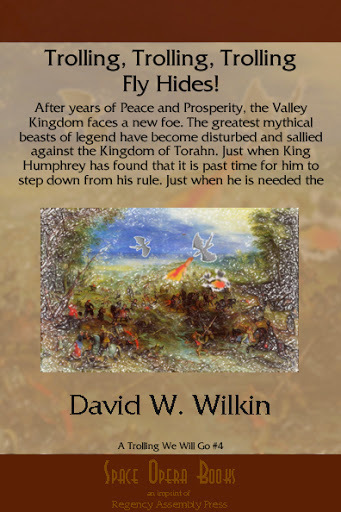
Barnes and Noble for your Nook
Old age is catching up to Humphrey and his friends. He feels it in his bones and with his son and heir having reached the prime of his life, it could very well be time to pass the baton of rule to Daniel.With the Valley Kingdom of Torahn at Peace, that would not be a terrible thing to do. Though breaking his decision to his wife Gwendolyn, the Queen, might be the hardest battle that he ever would fight.
Even as the life of retirement looks to be attractive and possible, however, the Valley Kingdom is beset again. Not Goblins, Trolls, Giants or Men, this time. No. That Humphrey knew would be far too easy.
Those obstacles had been overcome before and the problems they presented had solutions that the army of Torahn was trained to deal with. No, of all the creatures that came forth from Teantellen that they had beaten, the one they had never faced now came forth. Dragons!
Who in the realm knew how to fight these mythical beasts? Was there even away to do so?
Now Humphrey who had thought to spend the remainder of his days quietly writing his memoirs and drinking, was faced with the greatest challenge he had ever known.
Feedback
If you have any commentary, thoughts, ideas about the book (especially if you buy it, read it and like it ;-) then we would love to hear from you.

January 21, 2015
Regency Personalities Series-Charles Stuart 1st Baron Stuart de Rothesay
Regency Personalities Series
In my attempts to provide us with the details of the Regency, today I continue with one of the��many period notables.
Charles Stuart 1st Baron Stuart de Rothesay
2 January 1779 ��� 6 November 1845
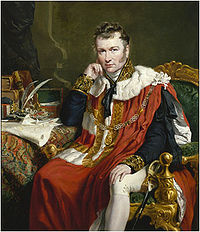
Charles Stuart
Charles Stuart 1st Baron Stuart de Rothesay was the son of Lieutenant-General the Honourable Sir Charles Crichton-Stuart, younger son of Prime Minister John Stuart, 3rd Earl of Bute. His mother was Louisa, daughter of Lord Vere Bertie, younger son of Robert Bertie, 1st Duke of Ancaster and Kesteven. He was educated at Eton and Christ Church, Oxford.
Stuart joined the Diplomatic Service in 1801,and was immediately appointed as Secretary of Legation in Vienna, a post he held until 1804. He was then sent to Petersburg and this was followed by an assignment in French occupied Spain in 1808. He served as Envoy Extraordinary and Minister Plenipotentiary to Portugal and Brazil between 1810 and 1814.
Briefly Ambassador to the Netherlands between February and May 1815, it was during his posting as ambassador in Spain that he became indispensable to the Duke of Wellington. At the Generals’ insistence, he was appointed British Ambassador to France. During Napoleon’s Hundred Days, he left Paris and was in Brussels at the start of the Waterloo Campaign, where during his stay he attended the Duchess of Richmond’s Ball. After the fall of Napoleon, he escorted the exiled French King Louis XVIII back to Paris, and became British Ambassador there until 1824.
From 1825 to 1826 he was once more Envoy Extraordinary and Minister Plenipotentiary to Portugal and Brazil. He was created Count of Machico in 1825 by John VI of Portugal and Marquess of Angra in Brazil in 1826 by Maria II of Portugal, and was a Knight of the Portuguese Order of the Tower and Sword. In 1825 the Portuguese King John VI named Stuart his plenipotentiary with powers to negotiate and sign with Brazil a Treaty on the recognition of that country’s independence. Invested with those powers, Stuart signed the treaty recognising Brazilian independence on 29 August 1825, and on 15 November of the same year the Portuguese King ratified the treaty.
In January 1828 he was once again appointed Ambassador to France and was raised to the peerage Baron Stuart de Rothesay, of the Isle of Bute, at the same time. He continued as Ambassador to France until 1831. In 1841 he was made Ambassador to Russia, a post he held until 1844.
He was appointed a Knight of the Order of the Bath (KB) in 1812 and sworn of the Privy Council in 1814. In 1815 he was made a Knight Grand Cross of the Order of the Bath (GCB)
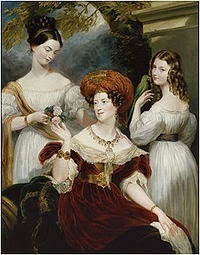
Elizabeth Lady Stuart de Rothesay
by George Hayter, 1830.
Lord Stuart de Rothesay married Lady Elizabeth Margaret, daughter of Philip Yorke, 3rd Earl of Hardwicke, on 6 February 1816. They had two daughters:
Hon. Charlotte Stuart (1817���1861), wife of Charles Canning, 1st Earl Canning.
Hon. Louisa Anne Stuart (1818���1891), wife of Henry Beresford, 3rd Marquess of Waterford.
Early retirement from the diplomatic service meant he start on a project to build a new family home. By 1830 he had purchased much of the eastern end of the estate, at Highcliffe, Dorset. Previously had been owned by his forebears, the estate had been sold by his father. He engaged William Donthorne, a founder member of the Royal Institute of British Architects, to design a new Highcliffe Castle. The castle is built on an L shaped plan, oriented on a south-east axis, so the oriel window is central on the south east elevation, providing a vista across the landscaped gardens to a panorama of the needles and Isle of Wight. Used in the building of the house was carved medieval stonework from the Norman Benedictine Abbey of St Peter at Jumieges and from the Grande Maison des Les Andelys. Both of these buildings had fallen into disrepair after the French Revolution. Also included in the castle, were a 16th-century oriel window and a stained glass window.
After the Castle was completed, Charles became Ambassador to Russia in 1841. However ill-health caused his return to England and he died at Highcliffe in November 1845, aged 66, when the barony became extinct. He was buried at St Mark’s Church, Highcliffe and his memorial can still be seen there. Lady Stuart de Rothesay remained a widow until her death in June 1867.

An Unofficial Guide to how to win the Scenarios of Wild the 2nd Expansion for Rollercoaster Tycoon 3
An Unofficial Guide to how to win the Scenarios of Wild
I have been a fan of this series of computer games since early in its release of the very first game. That game was done by one programmer, Chris Sawyer, and it was the first I recall of an internet hit. Websites were put up in dedication to this game where people showed off their creations, based on real amusement parks. These sites were funded by individuals, an expense that was not necessarily as cheap then as it is now. Nor as easy to program then as it might be to build a web page now.
Prima Books released game guides for each iteration of the game, Rollercoaster Tycoon 1, Rollercoaster Tycoon 2 and Rollercoaster Tycoon 3 (RCT3) but not for the expansion sets. And unlike the first two works, the third guide was riddle with incorrect solutions. As I played the game that frustrated me. And I took to the forums that Atari, the game publisher hosted to see if I could find a way to solve those scenarios that the Prima Guide had written up in error. Not finding any good advice, I created my own for the scenarios that the ���Official��� Guide had gotten wrong.
Solutions that if you followed my advice you would win the scenario and move on. But if you followed the ���Official��� version you would fail and not be able to complete the game. My style and format being different than the folks at Prima, I continued for all the Scenarios that they had gotten right as well, though my solutions cut to the chase and got you to the winner���s circle more quickly, more directly.
My contributions to the ���Official��� Forum, got me a place as a playtester for both expansions to the game, Soaked and Wild. And for each of these games, I wrote the guides during the play testing phase so all the play testers could solve the scenarios, and then once again after the official release to make changes in the formula in case our aiding to perfect the game had changed matters. For this, Atari and Frontier (the actual programmers of the game) placed me within the game itself.
And for the longest time, these have been free at the ���Official��� Forums, as well as my own website dedicated to the game. But a short time ago, I noticed that Atari, after one of its bankruptcies had deleted their forums. So now I am releasing the Guide for one and all. I have added new material and it is near 100 pages, just for the first of the three games. It is available for the Kindle at present for $2.99.
(Click on the picture to purchase)
Not only are all 12 Scenarios covered, but there are sections covering every Cheat Code, Custom Scenery, the famous Small Park Competition, the Advanced Fireworks Editor, the Flying Camera Route Editor which are all the techniques every amusement park designer needs to make a fantastic park in Rollercoaster Tycoon 3.


